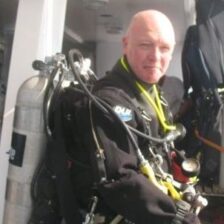Red Sea Shag Rock
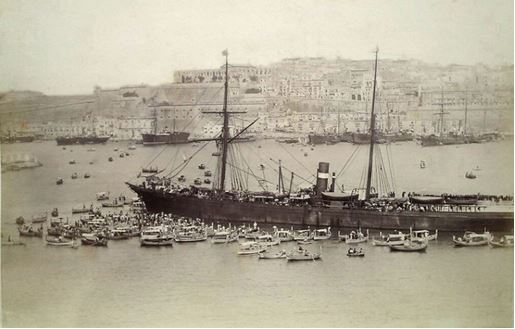
The SS Kingston was a ship of her time and that time was a period of profound change, sail was giving way to steam and the time of Iron ships was fast passing as Bessemer’s cheaper and more efficient steel production would eventually replace it for the construction of stronger, less brittle ships hulls……The Kingston was on the edge of technological change and she herself was a part of that paradigm shift. The Kingston was an Iron hulled Steamer and Brigantine rigged, meaning she was fitted with two masts and capable of deploying sail. That capability itself would linger in ships such as the Kingston, longer than it perhaps should have, given the public’s innate mistrust of mechanical machinery, the steam engines themselves, and various and very public early engine and boiler failures and, on occasion catastrophic explosions that were essentially a part of the almost frenzied Victorian era rush for “progress”

Kingston was built as a “Screw Steamer” in 1871 and launched 16 February of that year by Thomas (Ridley) Oswald & Co, of Pallion Shipyard Sunderland, her “Type” being a general cargo vessel. Sunderland was known for shipbuilding, in fact it purported itself as “Britain’s Shipbuilding Capital” and several notable yards would have been alongside Oswald & Co, notably George Short’s. Eventually trading as “Short Brothers”, George Short’s would become one of the largest, lasting until 1964: “In 1869, George Short transferred his timber ship building business from Mowbray Quay in Hylton to Pallion. The running of the business was transferred to his four sons and became known as Short Brothers in 1871, the same year that iron ship construction was adopted”. (Pallion, Sunderland in “Short Brothers Ltd. Shipbuilding Yard, Pallion” On-Line Resource: https://www.northeastheritagelibrary.co.uk/features/short-brothers-ltd.-shipbuilding-yard%2C-pallion Accessed 28/10/2024)
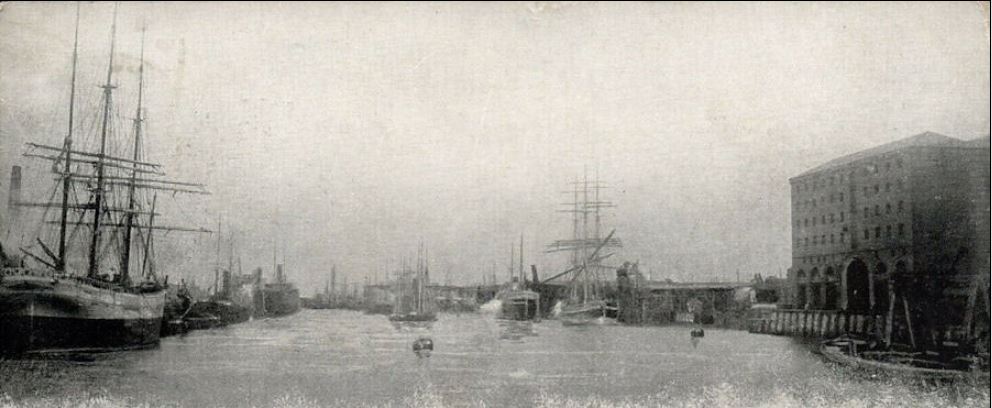
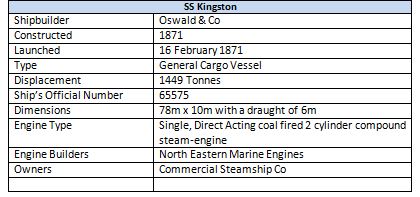
Thomas Oswald had anticipated the transition from wooden built ships to Iron hulls prior to the construction of the Kingston, indeed Kingston would be one of his early Iron hulled ships, and Thomas was well prepared, having essentially taken over an area of the Wear-side to ensure everything he would need would be under his own control: (“Wear Rolling Mills, 1870 ‘OPENING OF THE WEAR ROLLING MILLS” Shields Daily Gazette, 4 November 1870) “On Wednesday afternoon, the opening ceremonial of the extensive iron works, which have been some time in course of erection by Messrs T. Oswald & Co., Hylton Dene, took place. The foundation stone of the work laid during the latter part of April of this year by Mrs T. R Oswald, and from the favourable state of the season and perseverance of the proprietors, their officials and contractors, twelve puddling furnaces have been got into working order. The works will cover an area of twenty-one acres, and are situate on the Hylton Castle estate, belonging Wm. Briggs, Esq., High Sheriff of the county. They will form one of the most extensive and complete works of the kind in the kingdom, and will consist of 120 pudding furnaces, two pudding mills, two plate mills, three bar mills, six steam hammers, ranging from five tons and upwards. On Friday last, fire was got into twelve of the puddling furnaces; and on Tuesday afternoon, steam having been got up, the ponderous engines and machinery were got into motion, with the most satisfactory results….”
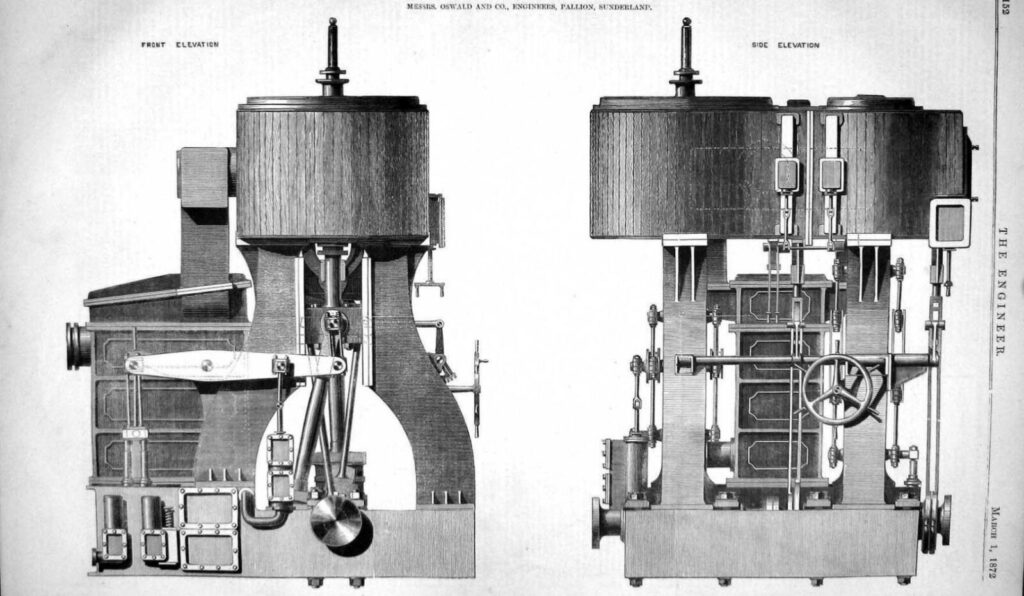
SS Kingston’s sailing career did not start without incident as her registration documents evidence, even before her Maiden Voyage, intended to be to Malta, she had to be re-inspected by Lloyds following a fire as her final fitting out was taking place at the South Docks in Sunderland. The Lloyd’s report states “The vessel caught fire under the following circumstances Vis. The funnels to the Donkey Engine being overheated, it set fire to some wood work near at hands, in consequence of which the under sides of the deck became slightly charred….” (Lloyds Report of Survey for Repairs No 10175 22nd August 1871) Although the Lloyd’s inspector Joseph Keene went on to certify “She is in good and efficient condition and fit in my opinion to remain as Classed…. 90 A1”
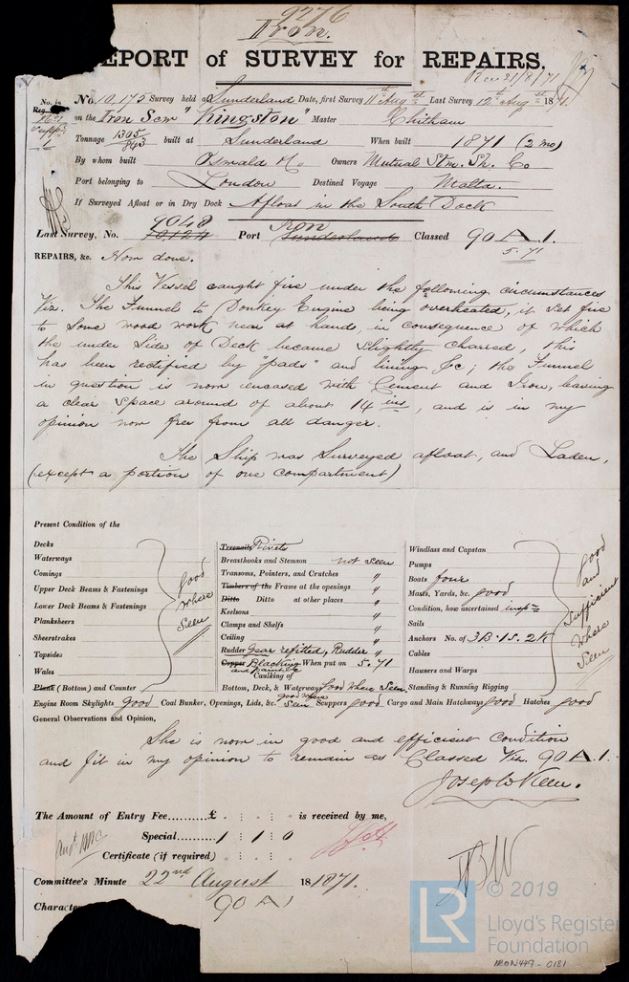
So the Kingston eventually left for Malta, her reputation unscathed and her donkey engine funnel now clad in cement and given a 14” clearance in order to prevent a similar occurrence en route, it would seem that worked well as the journey was unreported as any other than a normal passage. Her Master for the Voyage, and many to follow, was Captain Robert Chitham, who would command Kingston from her Maiden Voyage up until 1877 relinquishing her, presumably following her trip to Colombo, to Captain W A Firth at that point. I believe the Master, Robert Chitham, to be of Colchester in Essex, Chitham is an unusual name and there seems to have been a family of mariners of that name, all of Colchester origin, around that time, a series of schooner and Brigantine investors as well as Master Mariners in the case of two (Richard Chitham being another), the most likely, (being named in the Lloyds Repair Report of 1874 as “Rbt”) being Robert Chitham, his Masters certificate is shown below and would have him aged 63 at the time of the repair and 61 when he initially assumed command of the Kingston

The Kingston was, as already noted, a general cargo carrier and it is assumption at this point to make any comment on what she would have delivered to Valetta harbour on her arrival in Malta, we can speculate, perhaps with some degree of confidence, that her cargo might have reasonably been coal, given that she was surveyed (following the fire at her donkey engine) in Sunderland’s South Dock and, as stated in the engineer’s report of 22nd August 1871: “ The ship was surveyed afloat, and laden, (except a portion of one compartment)…..”As Kingston had not moved from her gravings until the survey, and the main cargo of Sunderland at the time was coal our assumption has, at least, some merit
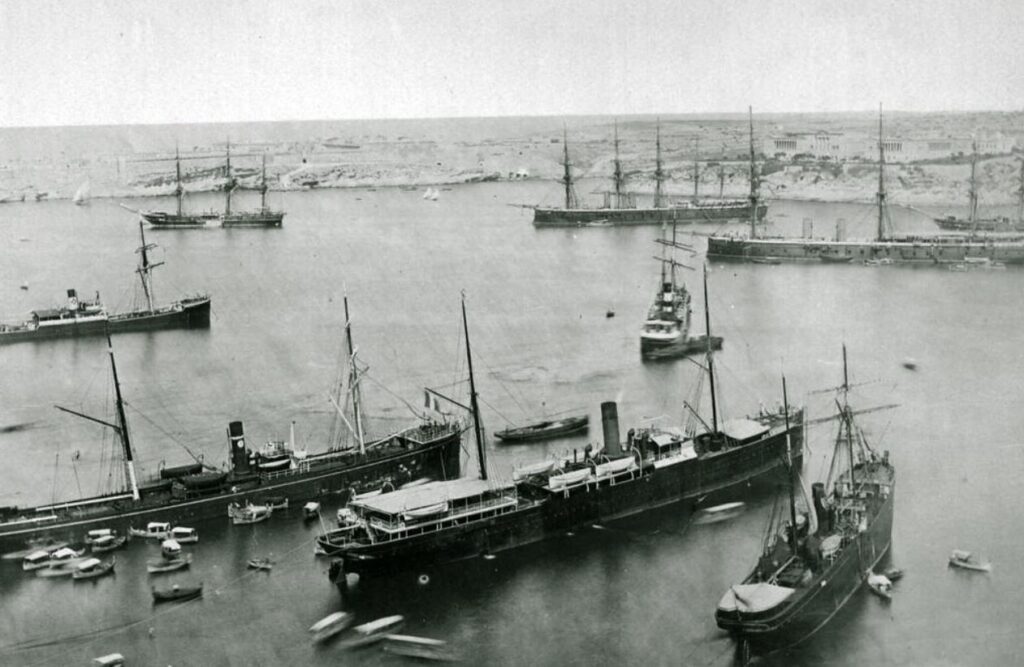
Malta was a burgeoning Empire port in 1871, as steam was gradually overtaking sail in both merchant and Royal navies, coaling was an ever increasing necessity, a safe British Mediterranean port was vitally important to the Empire, to this end the construction of the new Somerset Graving docks, to accommodate increased marine traffic and carry out repairs, had been started in 1865 under Lt Col Andrew Clarke of the Royal Engineers. That construction work had involved the demolition of large parts of the local (Senglea) fortifications, and the removal of Commercial shipyards from French Creek. The dock was completed in 1871 in time for the arrival of the Kingston and, although we cannot be in any way certain, it is fanciful to think one of the vessels variously pictured in the photographs of Valetta harbour is actually of the Kingston
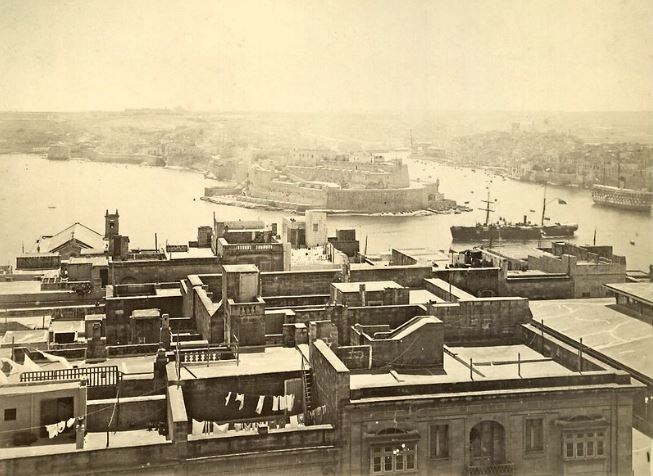
The Kingston unloaded her cargo in Malta and returned to Britain, likely loaded with palm products, oils, wines, cloth and numerous other products in demand in Britain at the time, any Empire comes about primarily to facilitate expansion and that expansion requires plentiful materials as imports as much as it does exports. Malta would have acted as a bridge between the Middle Eastern ports and Britain, the exotic produce of the Arab nations would have been a profitable trade for the Kingston and her owners. Kingston would not restrict herself to the Mediterranean ports alone, we have evidence of voyages much further afield than Malta, indeed in 1874, three years after Malta, we find Kingston in Kronstadt, docking in St Petersburg in Russia off the Island of Kotlin. Russia’s hero, Peter the Great founded Kronstadt in 1703 as a strategic maritime defence of St Petersburg, Russia’s capital city at that time. In 1720 a personal decree from Peter the Great stated “Those sailors skippers, who will have goods on the merchant ships coming to the port of Kronshtadt and St. Petersburg, will give receipts of those goods to the customs and, after inspection and rewriting, they can sell them from the ships to whom they want, and with that sale they shall pay a duty on the goods according to the trade regulations, only for the import, and shall not pay any other duty for sale” (History of Kronshtadt: 1720. On-Line Resource: https://kronshtadt.net/history/ Accessed 12/11/2024) The Baltic fleet of Russia’s navy was based at Kronstadt and the port city became a significant international trading centre visited by British, French, German and Nordic commercial traders, and, by 1866, there was a British seaman’s mission, which included a hospital, established in Kronstadt
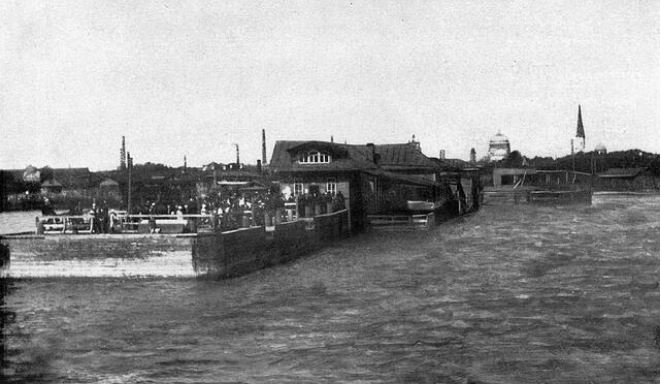
We can find a good description of Kronstadt contemporary to the Kingston’s visit from a visiting Englishman Fred T Jane: “Kronstadt being a commercial port as well as a naval arsenal, there is an English colony there, and this, combined with the floating population of the merchant ships, leads to an English chaplain being permanently stationed at the place. In connection with the English in Russia, it maybe of some interest to mention that at Kronstadt I found Russian officers with English wives, a third whose mother was an Englishwoman, while a daughter of the Admiral commanding is married to a British naval officer; (“Description of Kronstadt”. Jane. F.T c1890 in https://visit-saint-petersburg.ru/jane/ On-Line resource. Accessed: 13/11/2024). Trade goods at the time would largely have been Russian grain, Nordic fish and British pottery and China ware, which had been popular in Russia since Catherine the Great’s time “….Some of the sets were made to order for the elite: one famous example was the Wedgwood “Green Frog” Service created for Catherine the Great herself.[3] Plenty of ordinary everyday items were also on offer to suit the tastes of Russia’s lesser nobility and merchants. At the end of the 18th century, English factories began to produce a range of pieces specially designed for Russia. Among the first such items were, most likely, the Wedgwood plates decorated with images of the statue of Peter the Great and of the transportation of the Thunder Stone under Catherine the Great, made in the late 1770s and 1780s” (“ENGLISH POTTERY IN RUSSIA. In the 18th and 19th Centuries”. Darya Tarligina. Heritage Magazine Issue #2 2016 in On-Line Resource. Accessed 12/11/2024)
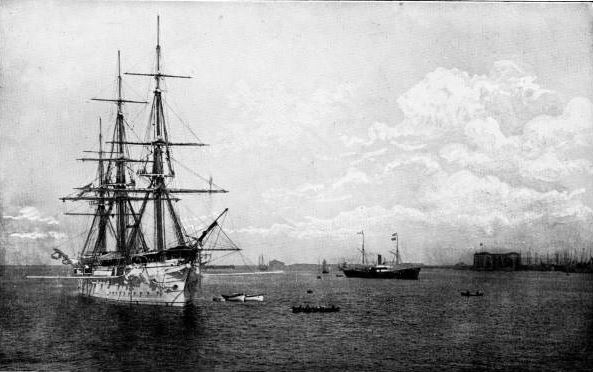
Kingston would make several documented voyages between 1874 and her eventual loss in 1880, her routes included voyages from Sunderland, again it is highly likely she would be carrying coal, out to Aden (another British outpost and a coaling station for her royal and merchant fleets), arriving sometime in 1874 eventually returning to London, however her cargo from London is unknown, although she shipped out for two more journeys to the Mediterranean in 1874.
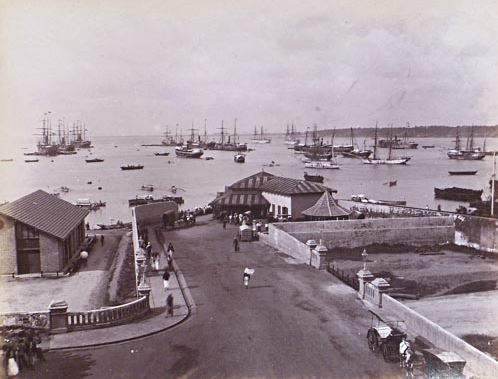
Kingston was outward via the west passage in 1875 to Cork, in Ireland, and is then recorded as travelling from Bristol to Colombo in Ceylon, (now known as Sri-Lanka) in 1877, returning to dock in Sunderland. These journeys all seem to have been under her Master Robert Chitham, Captain from her maiden voyage up until 1877, when, following the Ceylon trip, he handed her over to Captain W A Firth, likely at Sunderland, which she left, perhaps again loaded with coal, bound for Rotterdam, Holland sometime in 1878. In 1879 Kingston departed Middlesbrough for the Indian port of Kurachee, returning that same year to Newport, where she may, again, have taken on coal which was then transported to Savannah in the USA, the Kingston arriving in 1880
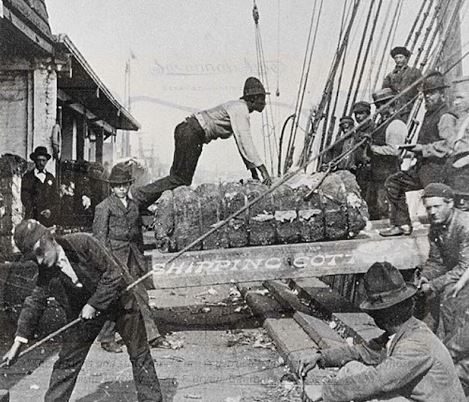
The owners of the Kingston clearly felt the need to distance themselves from the activities of the crew whilst ashore in Savanna, as this notice in the local newspaper makes clear, Savannah Morning News September 29th 1880: “Notice. neither the Captain nor Consignees of the British steamship “Kingston” will be responsible for debts contracted by the crew” Savannah in 1880 was one of the largest cities of the USA and had been a confederate stronghold in the civil war because of its port, well connected by rail, it was largely trading in cotton but also rice, lumber, molasses & rum. Savannah had been the first deliberately designed city in the USA based on a grid pattern, now common to many US cities

It seems Kingston docked from Savannah in Birkenhead, again in 1880, where the Kingston was handed to a new Captain, Thomas Richard Cousens, and then sailed to take on a cargo at Cardiff, on what would be her final voyage, once more transiting the Suez Canal into the Red Sea fully loaded with 1210 tons of coal for the bunker stock, bound for Aden, held there for her majesty’s steamers
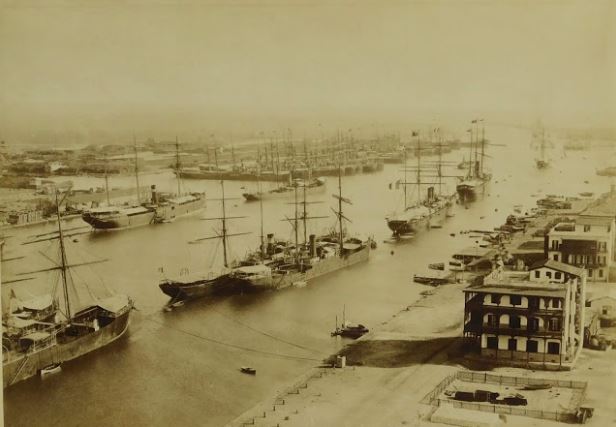
The journey is well documented and describes in perfunctory manner the early stages into the Red Sea as: “….Having passed through the canal, she left Suez at 8:15 a.m., on the 16th February last, and was kept on a south course until abreast of Newport lightship, when the course was altered to S. ½ E. At about 12:45 p.m. she passed Zafrand Light…..” (““KINGSTON.” (S.S.) Report of Court” https://plimsoll.southampton.gov.uk/SOTON_Documents/Plimsoll/14738.pdf On-Line Resource. Accessed 13/11/2024) Captain Cousens was sure of his navigation and clearly saw no reason to have his 1st officer check his course, as he steamed further south until sighting the Ashrafi Lighthouse around 9 to 10 miles off on a S.S.E. bearing. By 10:50 the lighthouse was abreast of the Kingston and Captain Cousens altered course ¼ of a point to South at S.E. ¾ S. At 11:45 the Captain ordered the fore topsail set, as the second mate and sailor appointed to the task were returning from setting the sail, and moving on to the aft to trim the yards, at around 11:45 the Kingston struck Shag Rock on Shab Ali Reef
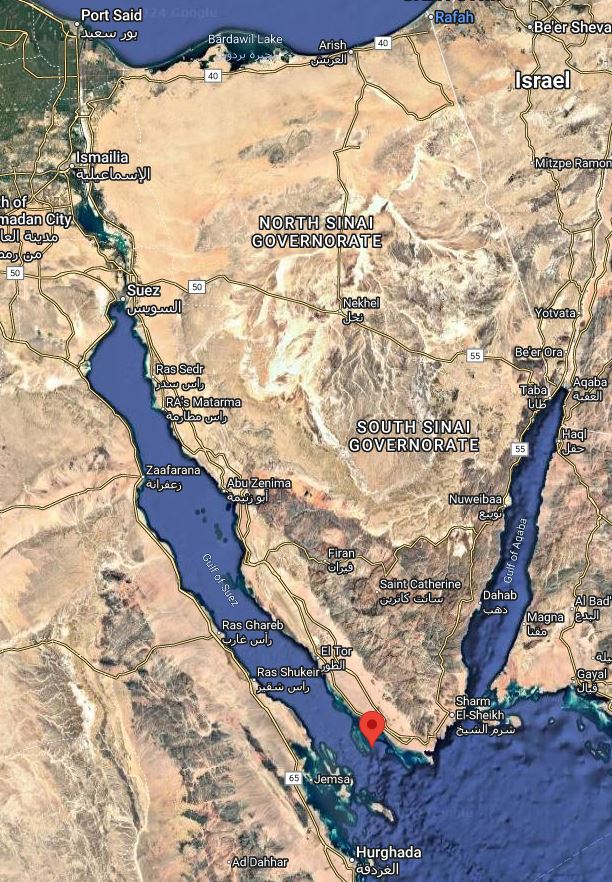
Captain Cousens had almost made it into the Red Sea, Sha’ab Ali was perhaps the very last obstacle he might have reasonably expected between the Kingston and open water, whatever, the Kingston was aground and soundings taken around her put 1 ½ fathoms (9 feet) at her bows, 3 to 4 fathoms midships and 7 ½ fathoms at her stern, Captain Cousens ordered an anchor to be carried out from her stern in an attempt to winch Kingston off the reef but it was unsuccessful, as was an attempt by the passing steamship Columbian to tow her off (previously the steamship F W Ward had offered to take those aboard who wished to leave, but would not assist with a tow for whatever reason, now lost to history)
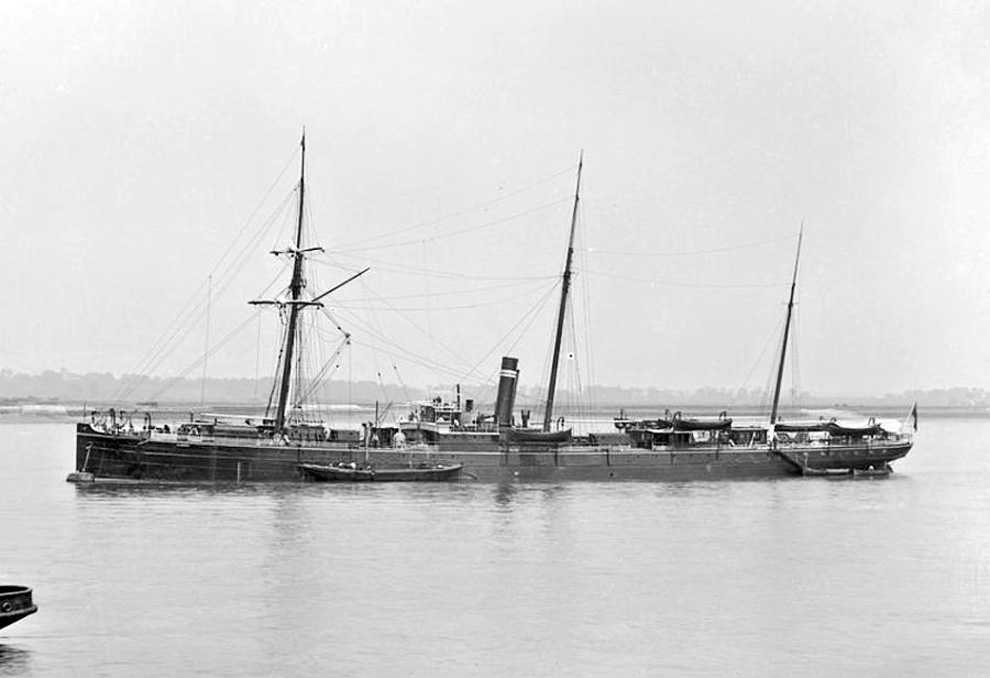
Despite jettisoning cargo, and the protracted attempts by Kingston herself, and those of the Columbian, it became clear the Kingston would not be recovered from the reef and the Columbian left her, as evening drew in Kingston began to take on water, the next day, the 19th Captain Cousens, realising further efforts were futile, gave the order to abandon ship, allowing the 1st mate and 16 of the crew to board another vessel, the Denny & Son steamer SS Almora (a Red Sea transport based in Port Said), for recovery and repatriation. Captain Cousens and a crew of 5 remained with the Kingston until the 20th when her boilers went out and she began sinking deeper into the gulf, they would remain on Jubal Island until being taken off on the 24th by the steamer Strathmore, having become perilously short of water and rowing to mid channel for better chance of rescue
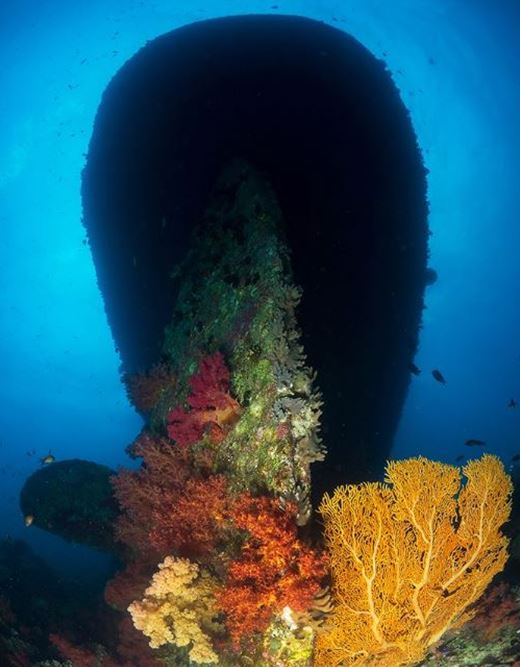
I dived the SS Kingston on a Blue O2 Red Sea liveaboard trip from Blue Horizon in July of 2013 and my Green Navy Log records the dive as: “KINGSTON – RED SEA – Off the boat directly onto the stern of Kingston laying hard into the reef and well broken up. The stern is whole with rudder and prop which we swam through – the whole midships remains but skeletal and just amazing – full of soft and hard corals with all the fish of the most pristine aquarium possible. Just what a Red Sea wreck should be after 100 years under water – the colours are fabulous – a huge fan coral by the prop on the Starboard side just a wonderful marine biologists dream. Masts lay across the stern deck area of the wreck and for-ard of the bridge but little left of the front. Wonderful dive – Air In 200 Out 150 Buddy Craig”
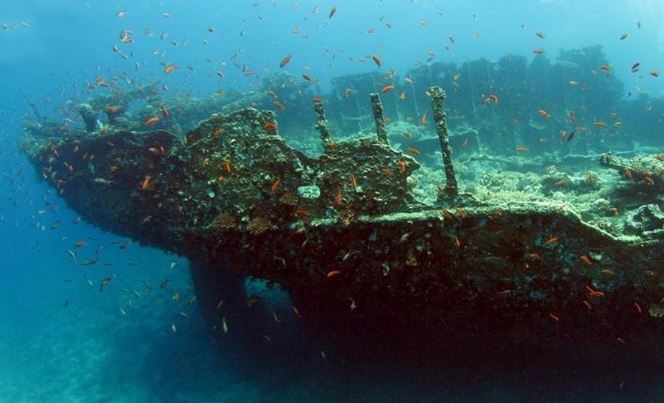
Having just dived the Salem Express, Aida & Numidia, all iconic Red Sea wrecks, in the days prior to the Kingston, the descriptive is somewhat more effusive than I would have expected reading it back. I recall the dive even now as the swim through the large prop and its rudder post was very enjoyable due in some part to the large blades and the beautiful corals that can be seen in Carlos Martinez wonderful shot above. The Kingston is a stunning example of reef and wreck becoming “one”, sometimes hard to see any distinction due to the concretion effect of colonising corals, the habitat produced is brilliantly colourful as Kingston is not a deep wreck by any means, the myriad of Red Sea fish give the effect of being the plastic diver forever suspended from the tiny air-tube in a tropical fish-tank……
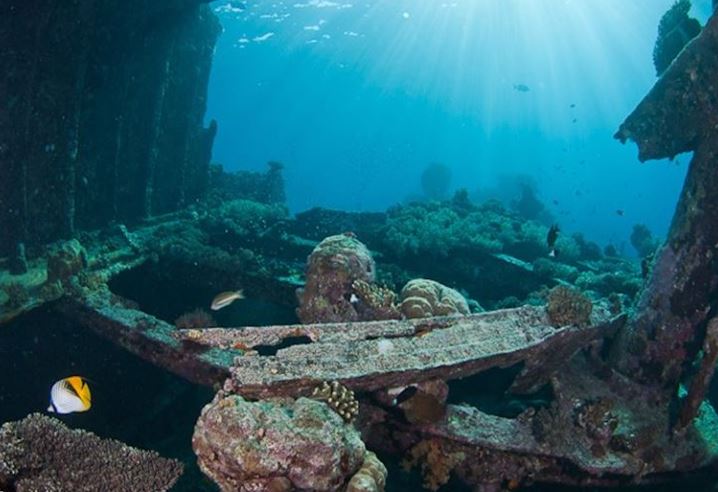
To date this is my only dive on the SS Kingston and it is definitely one I would do again, if only to run a good Go-Pro sequence across what I know would be an absolutely brilliant dive. Kingston sits perfectly as she is open but retains her shape, if anything I would spend more time looking for evidence of her bow and the chain lockers and anchor, one of which at least should still be around on the reef somewhere. There is definitely one to find off her stern as captain Cousens had it run out by lifeboat or cutter in order to try to winch her off the reef from the stern. The spare prop was still in place just to the rear of midships and is picture-perfect for photographers
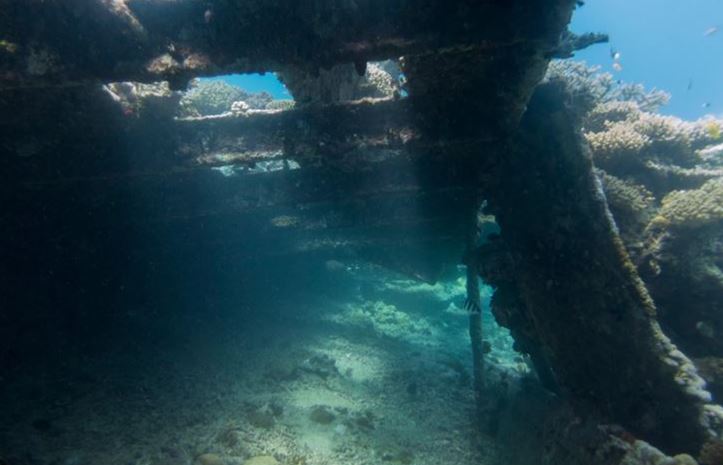
The court enquiry into the loss of the SS Kingston can be found on-line (https://plimsoll.southampton.gov.uk/SOTON_Documents/Plimsoll/14738.pdf) and makes very interesting reading, Captain Cousens had sailed the route previously on three occasions, only once as Master, for him to have not used accepted, even strongly recommended techniques of the time to ascertain his true distance from each of his navigational references (Cross bearings and four point bearings) before making course corrections, then we would not be reviewing this dive. The part I find most telling is perhaps that Cousens was a fairly “New” master in seafaring terms, this only his second trip down the Red Sea as Master of his own vessel, perhaps hubris and a sense of innate need to be seen as master gave him to keep his own council and not seek his 1st mate’s confirmation of his navigation? In the hearing Captain Cousens made a case that local currents had given rise to the Kingston being off-course, rather than admit his navigation was lacking, as he had no corroboration of this to fall back on the blame for the loss of the Kingston fell entirely on him, his masters certificate being revoked for a year, but the court was lenient on Cousens insomuch as it allowed him to remain certified as first officer for that period, allowing him to continue his career, which he did quite successfully, although not without running two more ships aground at various points…….
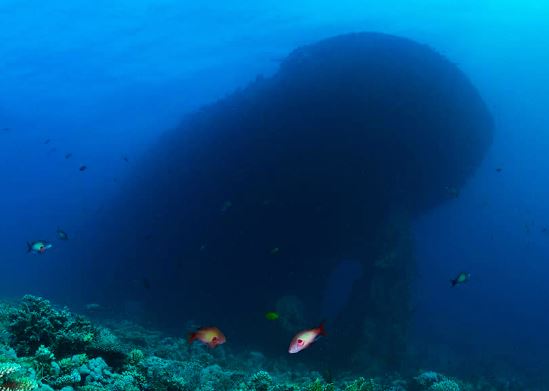
I will leave you with the profound echo of words spoken in hallow halls: “That the tides could have set the vessel on the Shag Rock, which is the excuse that the master offers for getting upon it, cannot for one minute be admitted, if we assume that the vessel was on her proper course, or even in mid channel when passing Ashrafi Lighthouse; for the “Red Sea Pilot”, speaking of the tides, tells us, page 13, that “in the narrow straits of Jubal, the channel being narrowed by the islands and reefs lying therein, the rate is from 1 ½ to 2 miles per hour, the flood stream running to the S. E., and the ebb to the N.W., or nearly in the direction of the axis of the channel,” but that “within 2 miles of the reefs, the tides are uncertain in their direction” So long then as the vessel was kept in mid stream or to the west-ward thereof, the tide would merely setting her either up or down the strait, and it is only when she gets within 2 miles of the reefs, which are on the East side, and where she should never have been, that the tides become at all uncertain. In our opinion the case of the stranding of the vessel was that she was allowed to get too far to the eastward of her course before reaching Ashrafi lighthouse, and that a course was then steered which took her directly on to the Shag Rock.”
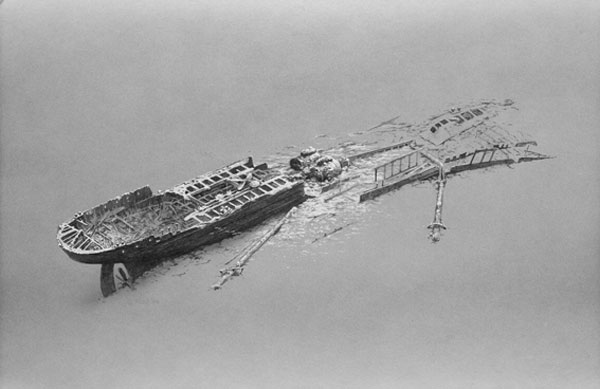
As always, this piece would not be half the read without the wonderful photo’s and illustrations that accompany it, and I am therefore very grateful to Lea Francis Ellis, The Ordnance Survey Office, Wilfred Coates, The Engineer Magazine, Lloyds Register Foundation, CrewList.Org, Kronstadt Town History, Abe Books, Georgia State Archive, George N Barnard, Arnoux Hipployte, Google Maps, Clyde Ships, Carlos Martinez, SearleCanada, redseadivers, Blueforcefleet, Rico Oldfield and Plimsoll Southampton for the opportunity to stand on the shoulders of giants who went before me!
